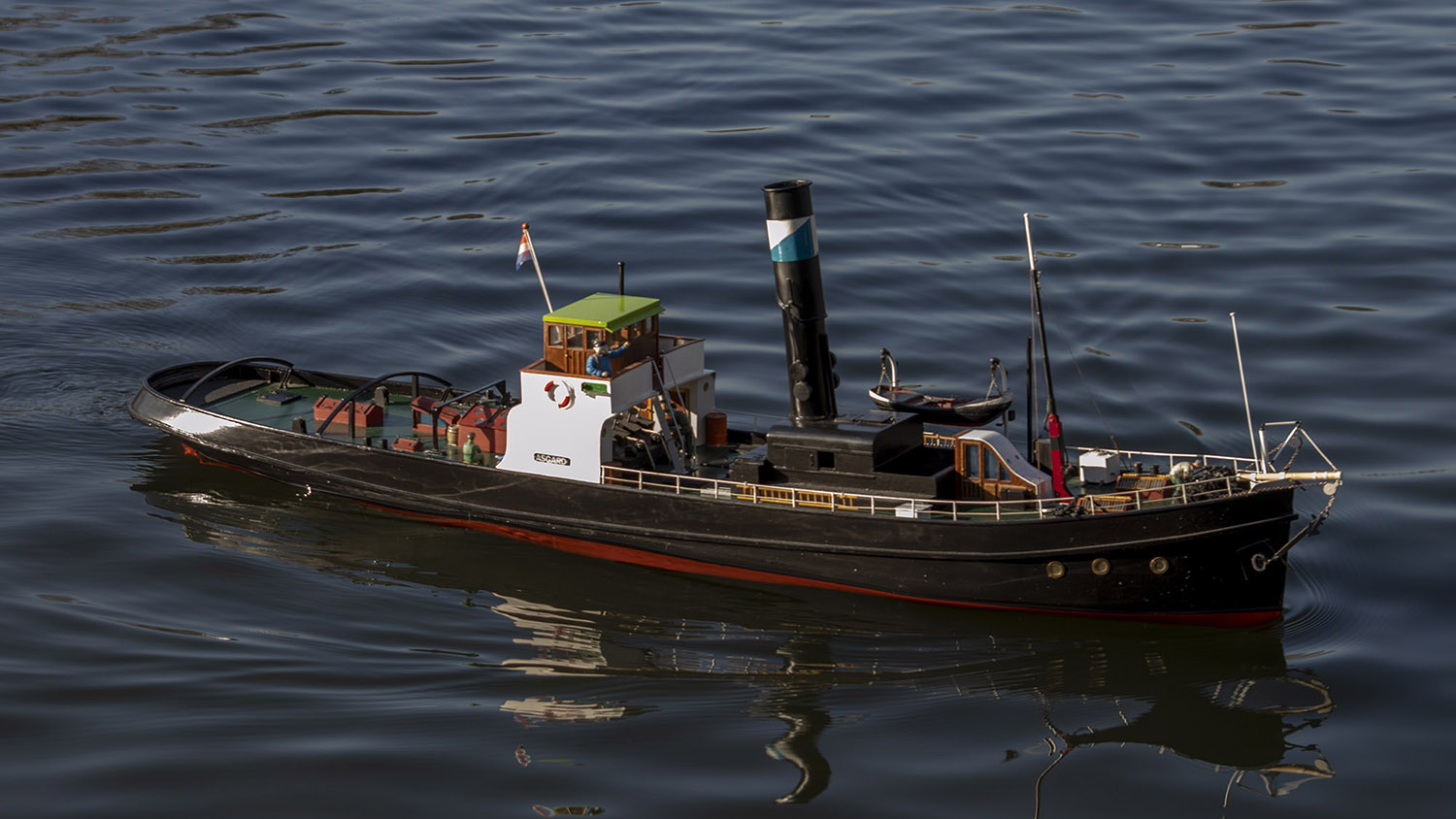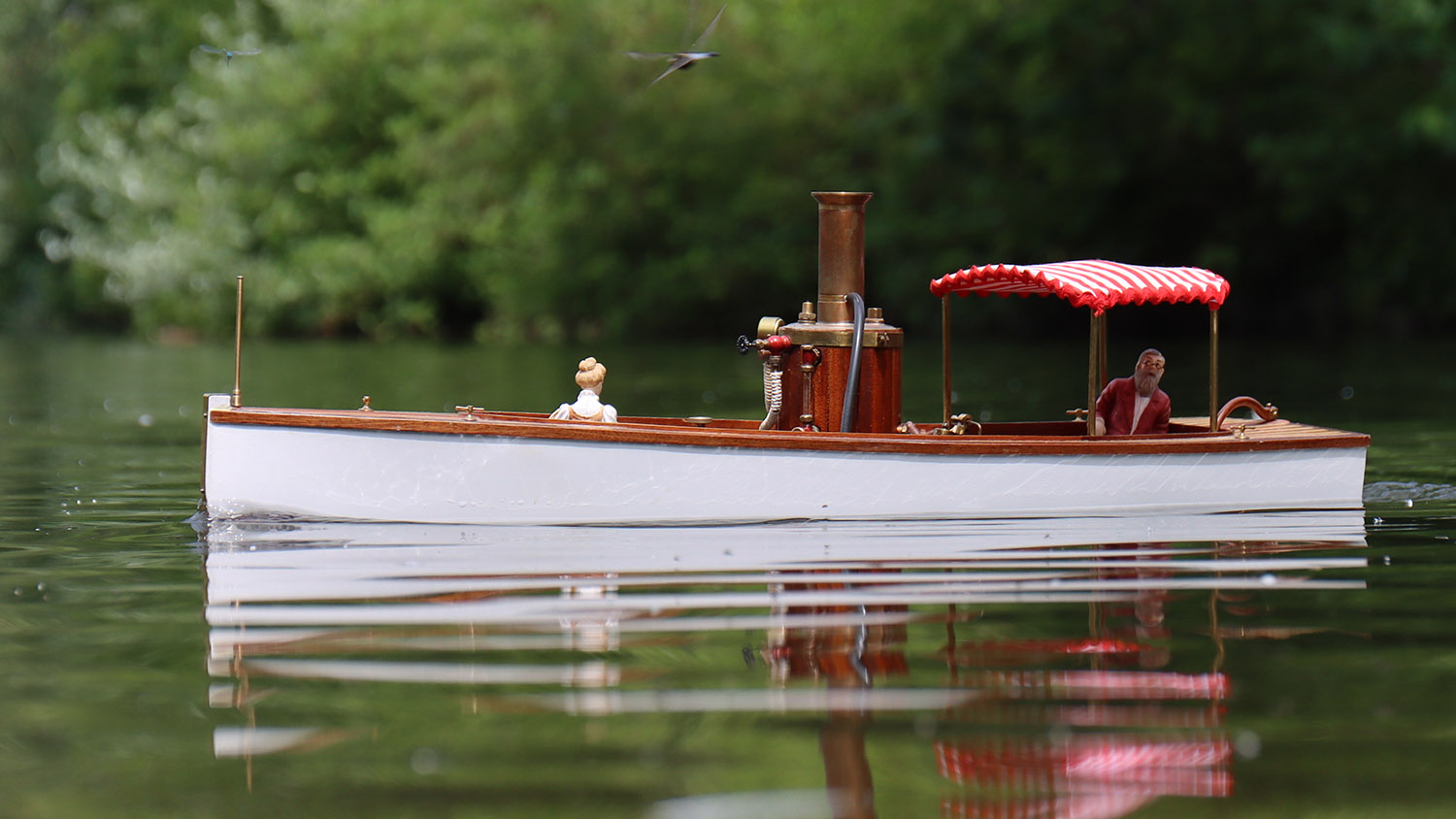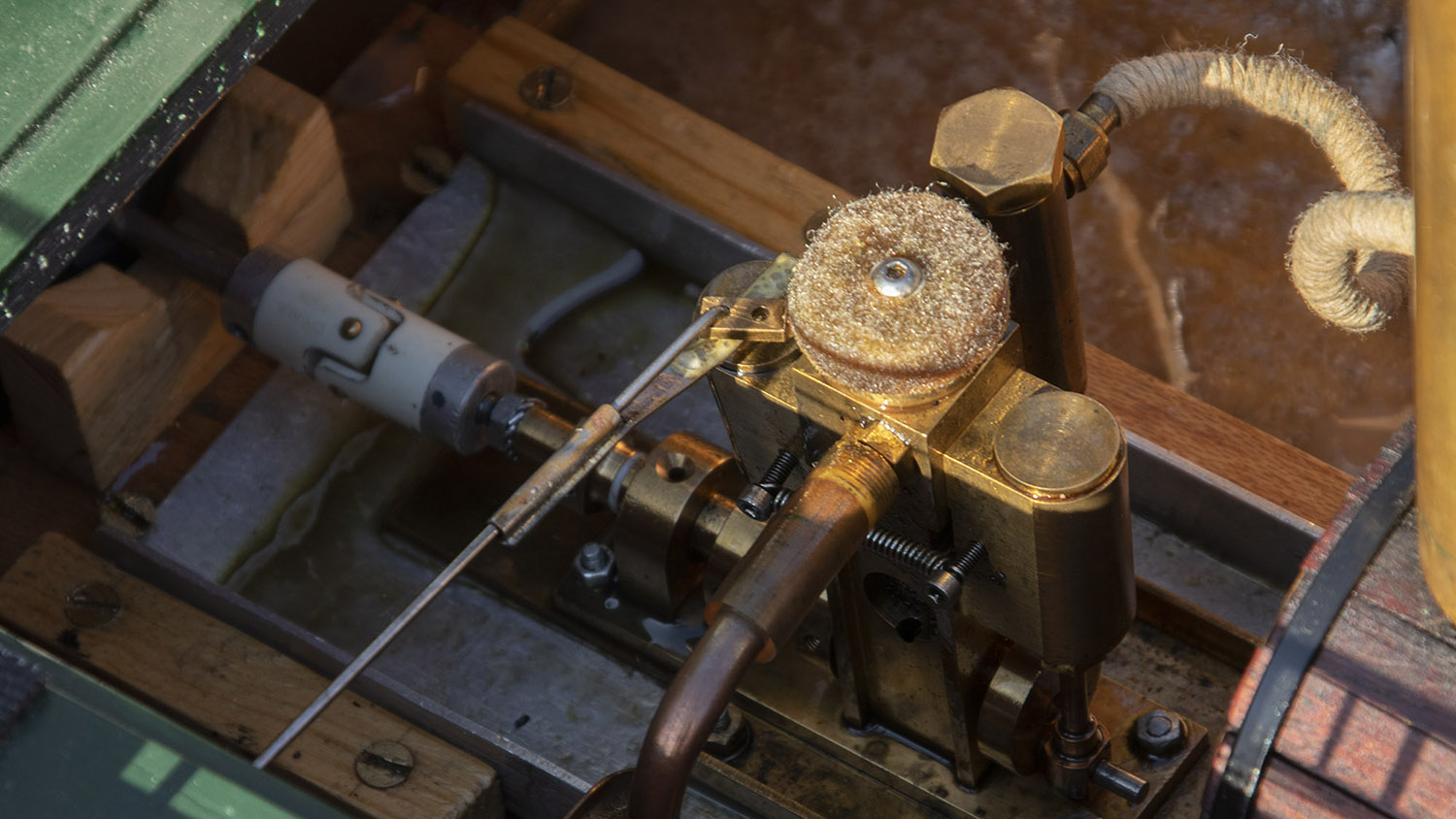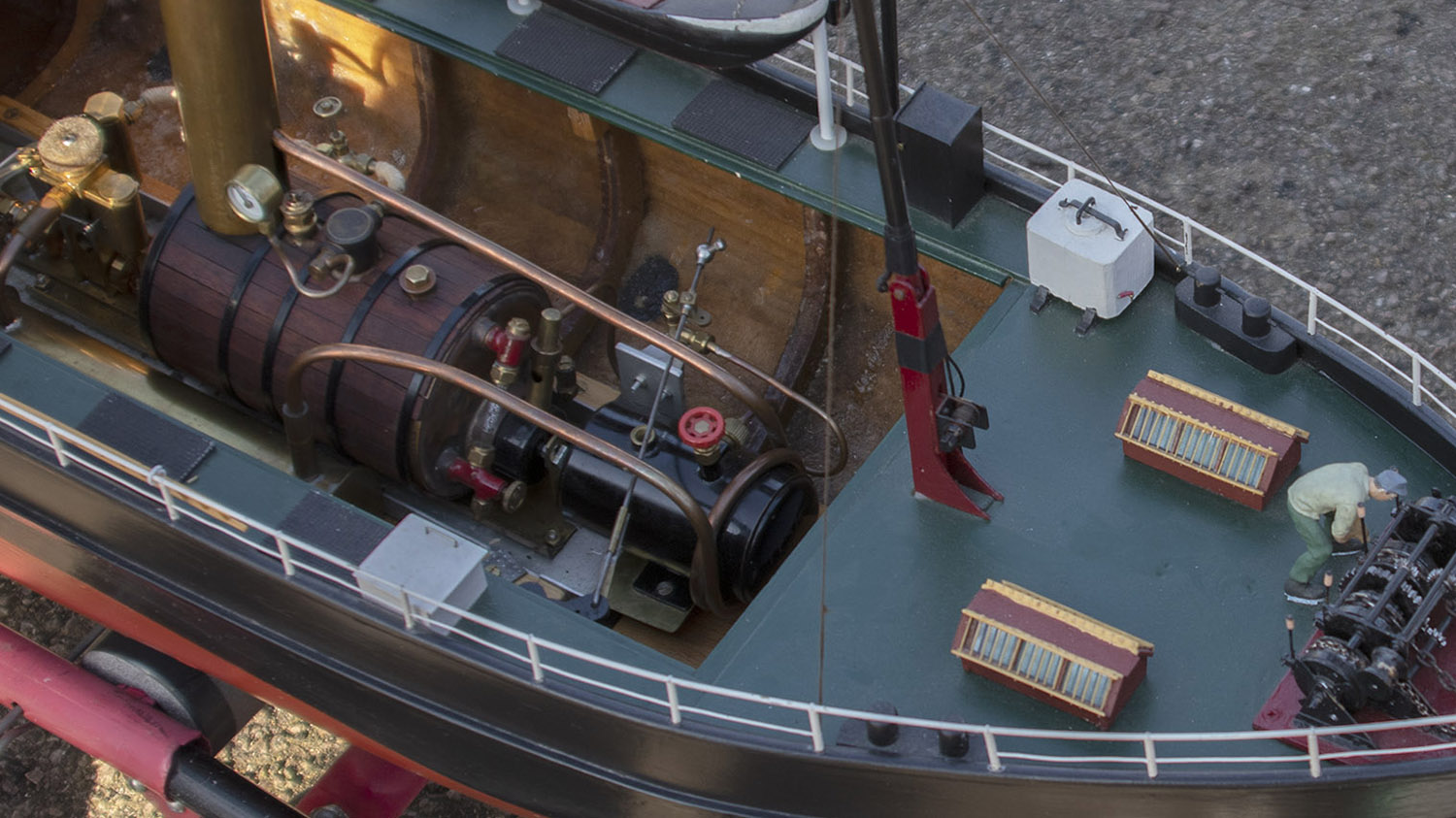Full Steam Ahead...
Steam powered boats always attract some attention either from fellow modellers or the general public. Fortunately at SMBC we still have the occasional appearance of some steam powered vessels. Unlike electric boats, which, once constructed are very much plug and play, steam requires more technical knowledge, engineering skills and patience while the boiler heats up! The main consideration of running a steam powered vessel is one of safety; Boilers need an annual inspection and pressure test in order to issue a safety certificate, necessary for running on most model boat club lakes, including ours at Fairlands Valley Park. Some time limit for sailing to ensure the boiler does not run dry Steam is a specialised subject so we will only touch on the basics of running a steam boat here, and take a look at Asgard, a steam tug seen regularly at the lake.

So what do we need to get "Full Steam Ahead..." Here's a shopping list of sorts.
A suitable boat
A steam plant
Some RC gear
A suitable boat... needs to be reasonable large to accommodate the steam plant so probably 1 metre plus and also needs good access for operation and maintenance. A typical vessel would be a tug with funnel placed midships allowing the boiler to be fitted forward of the engine. Good examples are the 'Assurance Tug' from Model Slipway, or the 'Resolve' from Caldercraft Kits. Clyde Puffers are another interesting model to fit with a steam plant, although as the funnel is at the rear some some thought is needed into what type of steam engine to use and where to locate it. The main question is whether to buy / build the boat first and find a suitable size steam plant to fit or decide on the steam plant and layout then build a boat to suit. For beginners in steam it may be preferable to opt for an open launch style where the engine is exposed and therefore easy to operate / maintain. There will be no issues of adequate ventilation with this. Alternately an engine below decks needs to have good access and ventilation so careful planning of where to locate the various components is necessary. Model Boats magazine have run features on steam power, so worth referring to.

A steam plant... sounds simple enough, and these can be bought as matched boiler and engine together, or one can choose to buy or build individual parts of the plant. What parts are needed? A boiler - these come in different diameters and can be either horizontal or vertical configuration depending on space in the boat. An engine - single cylinder, twin, or more are available, arranged in V, horizontal or vertical format. A multi cylinder engine can be fitted with a reversing options usually controlled by a steam valve and servo. A fuel supply, most commonly compressed gas from either a commercial gas cylinder or a refillable gas tank. Some system to keep the engine 'oiled' such as an in line displacement oiler An oil separator tank, to remove any oil from the exhausted steam - necessary for environmental reasons. Also advisable is a gas cut-off valve to enable shut down of the boiler in emergency.
Some RC gear... so 3 channel upwards is likely, controlling rudder, steam valve (throttle and reverse) and possible a cut off switch to shut of the gas supply to the burner in the event of problems.

Our featured model boat is 'Asgard', a steam tug, running on a vertical twin cylinder engine with horizontal boiler, powered from a refillable gas tank. Getting the steam up to pressure takes 10 - 15 minutes, with enough water for a 15 minute cruise on the lake. The original tug was built in 1916, named 'Hiberia' and owned by the Coal Trade Association, before being bought by the Dutch Transport Maatschsppi, who changed the name to Asgard. Model Asgard is about 1.4 metres long with good access to the internals as most of the deck comes off in different sections. You can see video of 'Asgard' on our YouTube channel here... SMBC You Tube Channel

We have a few steam boat pictures - head over to the Gallery where you will find some nice pix.
YouTube Video Channel...
Don't forget to check out our channel on YouTube to see some of our boats in action... we usually have a new video every couple of weeks.
